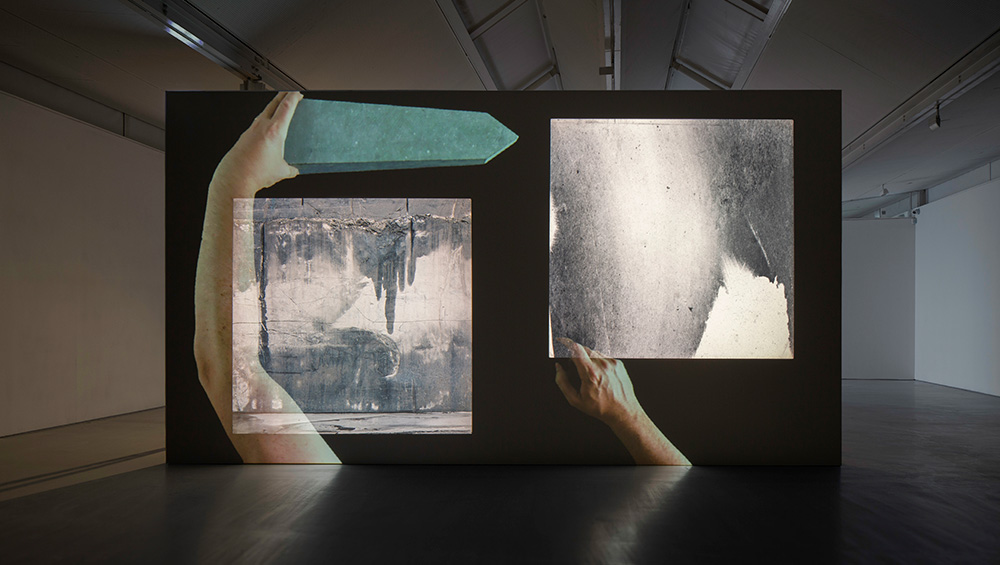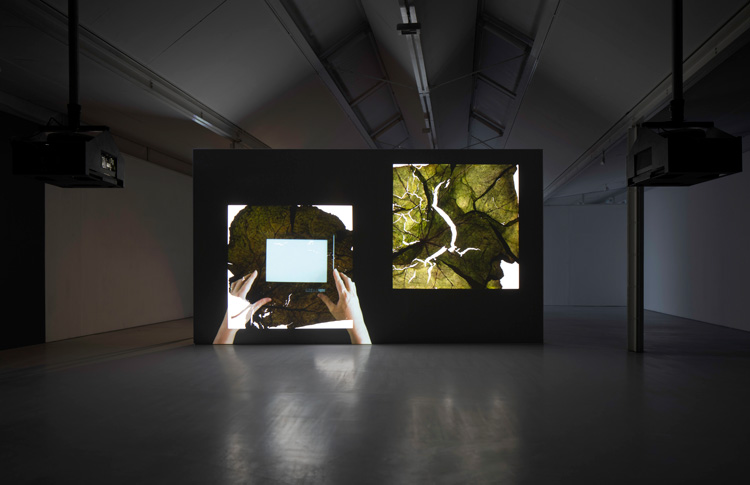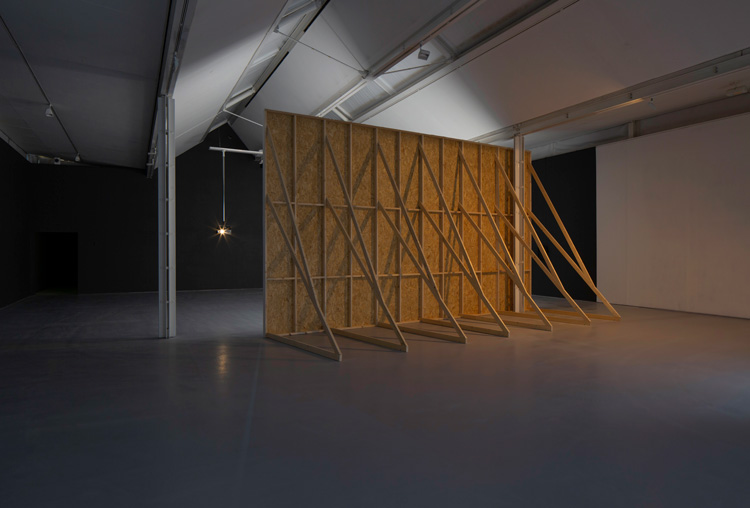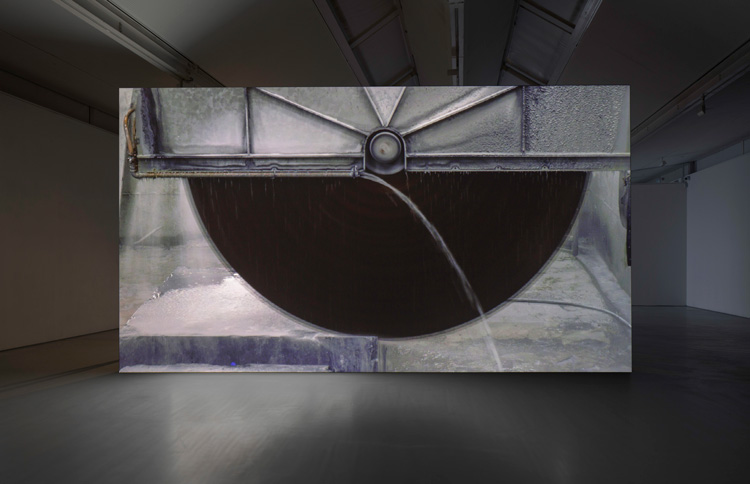
Dundee Contemporary Arts, Dundee
12 September – 15 November 2020
by JANET McKENZIE
Dundee Contemporary Arts presents an exhibition this autumn by the Birmingham-based artist Stuart Whipps (b1979). The installation, If Wishes Were Thrushes, Beggars Would Eat Birds, is a newly commissioned body of work that seeks to explore specific histories within plants and minerals in different parts of the world and through different academic disciplines and timescales. Employing a literary narrative allows the artist to reference a wide range of sources and issues that allude to colonial history through obscure publications and quotation. Nancy Mitford refers to Chatsworth House’s stone collection in her 1945 novel The Pursuit of Love so Whipps uses the Chatsworth collection in his research into the history of stone. The same novel includes a 17th-century Scottish verse that Whipps has taken as the title of this exhibition. If Wishes Were Thrushes, Beggars Would Eat Birds is intended to provoke the interrogation of power and privilege, as a means of unpacking colonial attitudes and practice, the role of statues and their destruction.

Stuart Whipps, If Wishes Were Thrushes, Beggars Would Eat Birds, 2020, Dundee Contemporary Arts. Photo: Ruth Clark.
Choreography enables the quirky range of material to flow; it is installed within the gallery as a sequence of moving images. Combined with the familiar click of a slide carousel (for art historians and students who trained in a pre-digital age) alongside digital images, the still and moving images are projected on to a freestanding wall in the large DCA gallery. The installation is evocative and also anomalous. Notes from the Belly of the Beast, an accompanying chapbook featuring new writing by the Irish artists Michele Horrigan and Sean Lynch, helps to shed light on Whipps’ quirky exploration of art and ideas, science and literature, and autobiography and environmental destruction. It is appropriate that the authors begin with a quote from the biologist and plant scientist Merlin Sheldrake, made in conversation with the writer Robert Macfarlane, and taken from Macfarlane’s brilliant and prescient 2019 book Underland: A Deep Time Journey. Macfarlane’s books inhabit the intersection of human and natural realms and he conjures the perspective of geological time. His writings enable us all to realise the minute scale of our personal lives in relation to history and to be aware of the backstories that are not included in the conventional or standard history of ideas. In quoting Sheldrake, McFarlane evokes a labyrinth of history and memory, landscape and literature, of chance and peripheral detail. “I have this plan,” Merlin says, “that for each formal scientific paper I ever publish, I will also write its dark twin, its underground mirror-piece – the true story of how the data for that cool, tidy hypothesis-evidence-proof paper actually got acquired. I want to write about the happenstance and the shaved bumblebees and the pissing monkeys and the drunken conversations and the fuck-ups that actually bring science into being. This is the frothy, mad network that underlies and interconnects all scientific knowledge – but about which we so rarely say anything.”

Stuart Whipps, If Wishes Were Thrushes, Beggars Would Eat Birds, 2020, Dundee Contemporary Arts. Photo: Ruth Clark.
Whipps has an impressive list of solo exhibitions to date, including, most recently: The Kipper and the Corpse, Ikon Gallery, Birmingham (2019); Isle of Slingers, Spike Island, Bristol (2016), and Photo Colour Services, Ithuba Gallery, Johannesburg, South Africa (2015). Over the past two years, he has focused on gardening and horticulture. His small private garden and another in a city allotment exist in parallel to the quirky research project that takes in garden history and botany and through a literary and scientific exploration into resource extraction – the quarrying of stone and logging – and soil science, with inevitable applications for the future of the planet. Whipps has an interest in process, not just the creative process of a multidisciplinary artist – he uses photography, choreography and installation – but those employed by disparate individuals in the present and in history from industry to literature. Literature and dance underpin Whipps’ exploration and they are juxtaposed in the artist’s narrative. So, too, are the processes that document mining and quarrying through to the political ramifications and taking ownership of our colonial history in the recent interrogation of public sculptures and tearing down of statues. Whipps choreographs seemingly disparate areas of expertise; in their essay, Lynch brings his knowledge of artisan history, specifically stone-carving to bear in the examination of statues and their colonial ramifications. The particular is pitched against wider histories; the macro and micro, elements of culture and science, plucking images of botanical detail and organic plant structures through to industrial scenes of quarrying limestone. Juxtaposing tiny scientific detail and literary references while gathering histories and storytelling from Scotland, Ireland, England, France, Switzerland and Mexico, the installation leaves one with a whirlwind of images and ideas. Horrigan and Lynch observe: “Whipps’ own voice shepherds along a collection of video footage, archival material and photographs, sent out into the gallery from digital and slide projectors. Monuments, stones, industry and the devil is a rough terrain of the scope of his investigations, although that’s far from everything he describes. His approach appears to be deliberately dishevelled and uncentred, always on the lookout for surprises rather than finding evidence that might defend some ingrained idea or theory that he started off with.”

Stuart Whipps, If Wishes Were Thrushes, Beggars Would Eat Birds, 2020, Dundee Contemporary Arts. Photo: Ruth Clark.
If Wishes Were Thrushes, Beggars Would Eat Birds invites us to consider the use of materials through time. We are shown industrial processes of extracting minerals through to the artisanal shaping of cultural icons, replete with references to historical political power. Unpacking the role of matter evokes the cultural history and power that have moulded our national psyche and wreaked havoc on the environment.
Resonating with the dislocation brought by the Covid-19 pandemic, Whipps’ exhibition is the first at the DCA since lockdown. Disparity and interconnectedness challenge us and afford little comfort, but they remind us of the importance of chance, of a spirit of discovery, of sharing, and of exercising the imagination.
Stuart Whipps: If Wishes Were Thrushes, Beggars Would Eat Birds
Dundee Contemporary Arts, Dundee
12 September – 15 November 2020